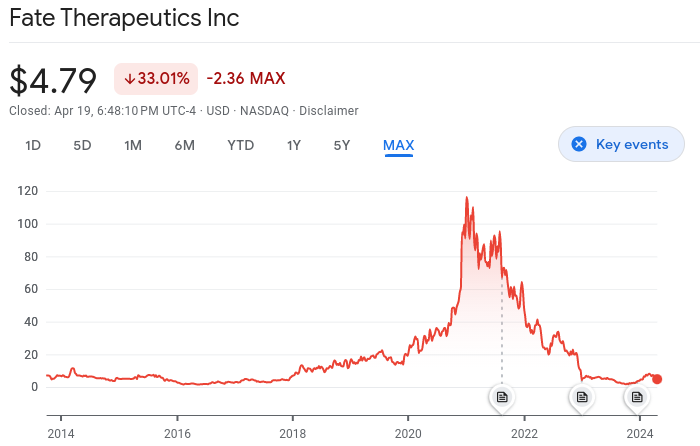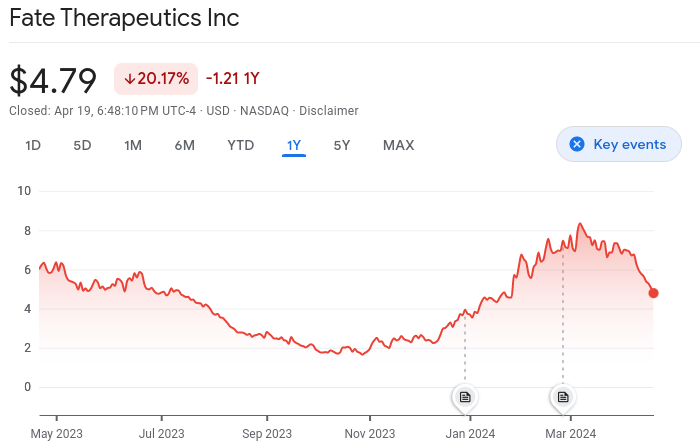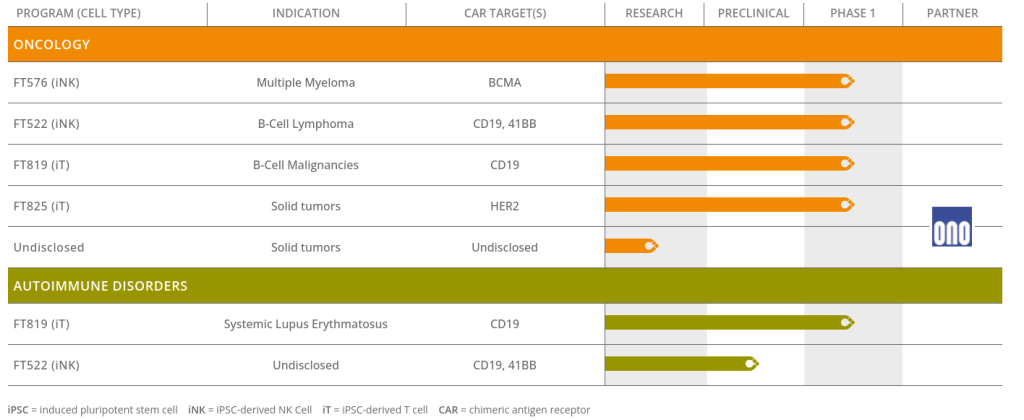Welcome to another story and another video in my One Company One Story series.
This time, Fate Therapeutics (FATE).
Here comes the amateur legalese.
I began investing in companies and their stocks in the late 70s, but am Not a certified investment professional.
My style and history of investing is described in Dream. Invest. Live., a book I wrote by request – which came out as the Great Recession (the Second Great Depression) began. Don’t underestimate luck. Oops.
My personal finance blog (a blog about my finances) is: https://trimbathcreative.net/
I am Not an investment professional. This is Not financial advice.
“To produce better cell therapies, we apply our proprietary iPSC product platform to create multiplexed-engineered, clonal master iPSC lines having preferred biological properties.” – Fate Technologies
“So that, as clear as is the summer’s sun.” – Folger Shakespeare Library
Or not.
They (Fate Therapeutics) use special stem cells to treat cancers and autoimmune diseases, or at least they hope to. Investing in biotech requires trusting to luck, or learning a lot of arcane words that are more accurate but not necessarily more descriptive to those of us without advanced degrees in biology, medicine, chemistry, and things like that. (Disclaimer: My degree is in aerospace and ocean engineering. In my opinion, Fate’s technology is tougher than rocket science.) The ‘hope to’ part comes in because they are an early-stage company. They have a few treatments in Phase 1 clinical trials, which is one step past lab studies, but at least a couple more studies away from commercialization and treating the general public – as I understand it.
Fate is yet another classic risk/reward tradeoff. Developing treatments for combating one cancer is big enough. Dealing with more than one can have a multiplier effect. Adding autoimmune treatments is a similar broad branch that is approached from a narrower beginning. Cancer and autoimmune diseases are paired because they both can be influenced by controlling cell death. Cells that don’t die can lead to cancer. (As I understand it.) Cells that die too readily is one way to describe autoimmune disorders. (As I understand it.)
The risk is that novel technologies must be proven in an already heavily conservative industry: ultimately, healthcare. The reward is that many existing treatments are not as effective as desired, so there is an unmet need for breakthroughs.
Fate is not the only biotech that has realized this. The current industry is enormous and can be very ineffective. Trying to get a breakthrough to break through is difficult, expensive, and there are many competitors aware of the situation. But which one will succeed?
While it may be fun to make fun of their description, it is also necessary. Biotechs have enormous responsibilities, so must be precise, even at the cost of confusing the uninitiated. That’s where there’s an advantage to the investor who is willing to learn more than a less-determined investor. The treatments may have high demand, but many investors want simpler investments. Lower demand can lead to lower prices, which can be an opportunity.
Take a look at the $FATE hashtag on Twitter (won’t call it X), and see lots of autobot traffic but very little actual human commentary.
Maybe it makes more sense to use the names they use on their web site: Stem Cells and Killer T Cells.
I have invested in companies that use similar approaches, which helps me; but even with that background, I will learn more before doing anything more.


After lingering under $10 for much of its early years, FATE spiked to over $100 in January 2021. The stock closed at $4.79 on April 19, 2024, so evidently, that spike didn’t stick. It is an example of how radically such stocks can move. While it looks like not much is happening, its twelve-month trading range is from under $2 to over $8. On a normal stock, that would be worth noting. As with many biotechs, such swings are possible because science, funding, and competition can dramatically change several times between now and the targeted commercialization.
I don’t know what’s going to happen; but, I hope they survive and thrive. I’ll be watching.
The video: https://youtu.be/oADCte3p9P8

